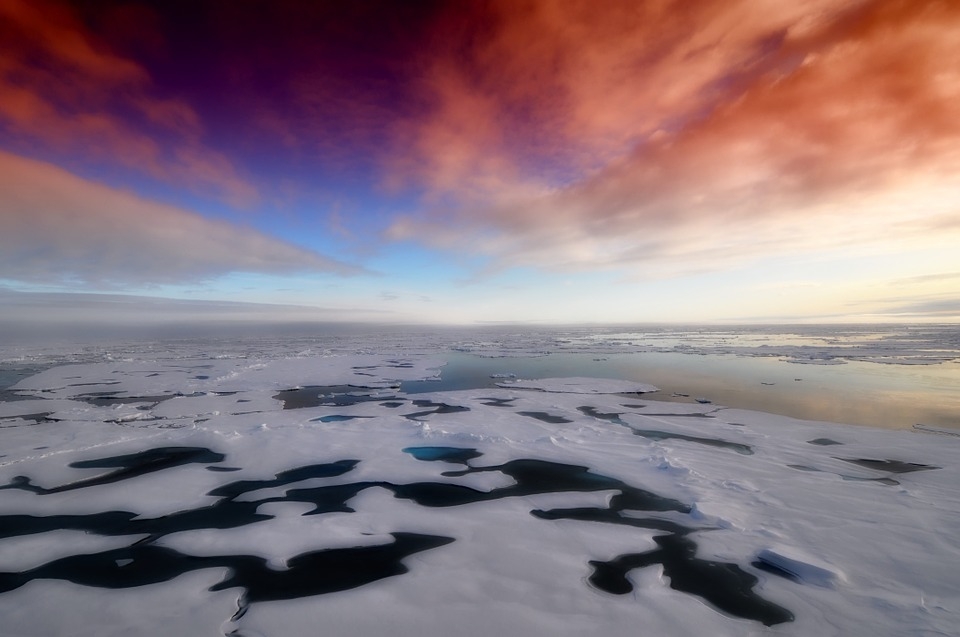There is still a lot to see when it comes to studying what lies in the polar region of Antarctica. A group of researchers discovered a magnetic anomaly hidden miles under the ice.
In the Amazon Prime series Forbidden Mysteries, a group of scientists found a magnetic anomaly covered under miles of ice in the arctic back in the 1990s. The group drilled into the ice and found a pristine body of water which is now known as Lake Vostok, found near Russia’s scientific research station in the eastern region. According to the series narrator David Taylor back in 2018, Russia had already suspected that they built their research base on top of a sub-glacial lake back in the 1970s.
Lake Vostok is the largest lake that has been discovered in the last century. It is the size of Lake Ontario, but with areas that go deeper, with a depth of more than 3,000 feet and quadruple the volume. The body of water, which is still surprisingly liquid and not frozen, could date as far back between 13,000 to 14 million years ago. The water has a temperature between 10 degrees to 18 degrees Celsius, which would mean that there is a subterranean heat source. Russian scientists have taken core samples and after further analysis, found the presence of microbes, nutrients, as well as gases such as methane. Summing up the findings, the researchers seemed to have discovered a whole ecosystem in Lake Vostok, hidden under the ice.
The ice in the Arctic region is slowly melting, further serving as a reminder of how real climate change is. Vice reports that US space agency NASA has released satellite images of Antarctica, showing the drastic melting of the ice caused by a brief heatwave from the 13th to the 15th of February. The temperature went up to 18.3 degrees celsius, the highest it has ever been.
The agency’s satellite photos saw the greening of Eagle island, a region in the icy continent. The heatwave removed about four inches of snow, and the agency believes that this particular heatwave was responsible for 20 percent of the region’s seasonal snow accumulation to melt.



 Why now is the time to address humanity’s impact on the moon
Why now is the time to address humanity’s impact on the moon  Six space missions to look forward to in 2024
Six space missions to look forward to in 2024  Customizing mRNA is easy, and that's what makes it the next frontier for personalized medicine − a molecular biologist explains
Customizing mRNA is easy, and that's what makes it the next frontier for personalized medicine − a molecular biologist explains  If life exists on Jupiter’s moon Europa, scientists might soon be able to detect it
If life exists on Jupiter’s moon Europa, scientists might soon be able to detect it  The brain is the most complicated object in the universe. This is the story of scientists’ quest to decode it – and read people’s minds
The brain is the most complicated object in the universe. This is the story of scientists’ quest to decode it – and read people’s minds  How do airplanes fly? An aerospace engineer explains the physics of flight
How do airplanes fly? An aerospace engineer explains the physics of flight  The mystery of consciousness shows there may be a limit to what science alone can achieve
The mystery of consciousness shows there may be a limit to what science alone can achieve  Why some people don't trust science – and how to change their minds
Why some people don't trust science – and how to change their minds  Dark energy is one of the biggest puzzles in science and we're now a step closer to understanding it
Dark energy is one of the biggest puzzles in science and we're now a step closer to understanding it  Eggs from men, sperm from women: how stem cell science may change how we reproduce
Eggs from men, sperm from women: how stem cell science may change how we reproduce  Genetic diseases: How scientists are working to make DNA repair (almost) a piece of cake
Genetic diseases: How scientists are working to make DNA repair (almost) a piece of cake  Tatahouine: 'Star Wars meteorite' sheds light on the early Solar System
Tatahouine: 'Star Wars meteorite' sheds light on the early Solar System  Why is the universe ripping itself apart? A new study of exploding stars shows dark energy may be more complicated than we thought
Why is the universe ripping itself apart? A new study of exploding stars shows dark energy may be more complicated than we thought  What is minoxidil, the anti-balding hair growth treatment? Here’s what the science says
What is minoxidil, the anti-balding hair growth treatment? Here’s what the science says  Alpha, beta, theta: what are brain states and brain waves? And can we control them?
Alpha, beta, theta: what are brain states and brain waves? And can we control them?  Synthetic human embryos let researchers study early development while sidestepping ethical and logistical hurdles
Synthetic human embryos let researchers study early development while sidestepping ethical and logistical hurdles 































